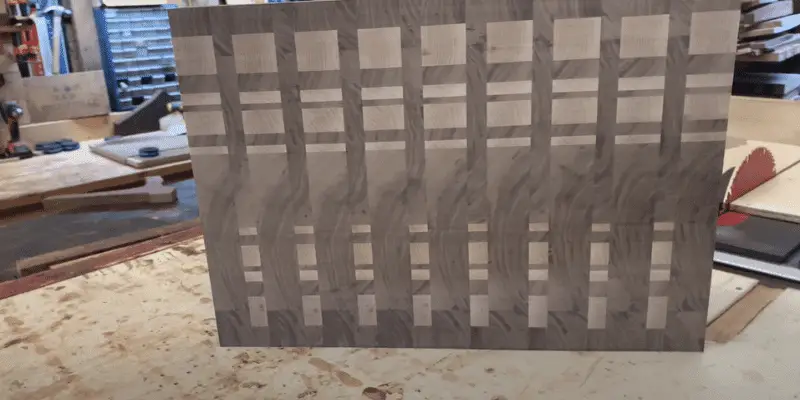Maple and walnut are two popular choices for woodworking due to their durability and aesthetic appeal. Both woods have distinct characteristics and are commonly used for furniture and flooring.
When it comes to maple, it is known for its light color and durability, while walnut offers a rich, dark color and a beautiful grain pattern. The choice between the two ultimately depends on the specific aesthetic and functional requirements of the project.
Understanding the unique properties of each wood can help in making an informed decision for your woodworking needs. We will explore the differences between maple and walnut, helping you to determine which wood is best suited for your next project.
Characteristics And Properties
Maple and walnut are two popular hardwood choices for furniture, flooring, and cabinetry due to their distinct characteristics and properties. Understanding the differences between them is crucial when deciding which wood type is best suited for a specific project. Let’s delve into the characteristics and properties of maple and walnut to help you make an informed choice.
Color
Maple: The color of maple wood can vary, ranging from creamy white to light reddish-brown. It often features attractive streaks of darker brown or black. Over time, exposed maple wood may develop a slightly golden hue.
Walnut: Walnut wood is known for its rich, deep brown color that can present as chocolate brown or purplish-black. It typically darkens with age, enhancing the wood’s lustrous appearance.
Grain Pattern
Maple: Maple wood has a fine, uniform grain with occasional irregularities. It can display attractive figure patterns such as bird’s eye, quilted, or curly, making each piece unique.
Walnut: Walnut wood is characterized by a striking, open grain pattern with swirling and wavy lines. This distinct grain adds a touch of elegance and sophistication to furniture and decorative items.
Durability And Hardness
Maple: Deemed as a durable hardwood, maple is often used for high-traffic areas due to its hardness and resistance to wear and tear. It is less susceptible to dents, making it an excellent choice for flooring and furnishings.
Walnut: While walnut is not as hard as maple, it is still a durable wood with a moderate level of hardness. It is less prone to splitting, making it suitable for furniture, countertops, and decorative applications.

Considerations For Furniture
When it comes to selecting the perfect wood for your furniture, considerations such as aesthetic appeal, functionality, and maintenance requirements play a crucial role in the decision-making process. Both maple and walnut are popular choices, each with its own unique characteristics that make them suitable for different furniture applications.
Aesthetic Appeal
Maple and walnut are both known for their distinct and appealing appearances. Maple features a light, creamy color with subtle grain patterns, offering a clean and timeless look for furniture. Walnut, on the other hand, boasts a rich, dark brown hue with prominent grain lines, creating a sense of warmth and sophistication. The choice between these two woods largely depends on the desired style and ambiance of the space in which the furniture will be placed.
Functionality
When it comes to functionality, maple and walnut offer different characteristics that cater to various furniture needs. Maple is renowned for its durability and resistance to wear and tear, making it an excellent choice for high-traffic areas. Its strength and stability make it suitable for furniture that requires frequent use, such as dining tables and chairs. On the other hand, walnut is valued for its natural resilience and ability to withstand both pressure and impact, making it ideal for crafting sturdy and long-lasting furniture pieces such as bed frames and cabinets.
Maintenance Requirements
Maple and walnut also differ in their maintenance needs. Maple typically requires minimal upkeep, as its smooth surface makes it easy to clean and maintain. Regular dusting and occasional polishing are usually sufficient to keep maple furniture looking pristine. In contrast, walnut may require a bit more attention due to its darker color and more intricate grain pattern. It may be more prone to showing dust and fingerprints, necessitating more frequent cleaning to preserve its natural beauty.
Specific Project Considerations
When choosing between maple and walnut for specific projects, it’s important to consider the unique characteristics and qualities of each wood type. Whether you’re planning a flooring installation, cabinetry construction, musical instrument crafting, woodworking, or artistic and decorative applications, the choice between maple and walnut can significantly impact the outcome of your project. Let’s delve into the specific considerations for each of these project categories.
Flooring And Cabinetry
Maple and walnut are both popular choices for flooring and cabinetry due to their durability and aesthetic appeal. However, they possess distinct characteristics that make them suitable for different preferences and styles.
- Maple: Known for its light color and uniform grain pattern, maple is often chosen for contemporary and modern interiors. Its resistance to wear and tear makes it a practical choice for high-traffic areas.
- Walnut: With its warm, rich tones and striking grain patterns, walnut adds a touch of elegance and sophistication to flooring and cabinetry. While slightly softer than maple, it offers a luxurious and timeless look.
Musical Instruments And Woodworking
Both maple and walnut are prized for their acoustic properties and workability, making them favored choices for crafting musical instruments and woodworking projects.
- Maple: Its hardness and bright tonal qualities make maple ideal for producing clear, articulate sound in instruments such as guitars and violins. It is also admired by woodworkers for its ease of turning and finishing.
- Walnut: The dense and resonant nature of walnut lends itself well to the construction of instruments like pianos and acoustic guitars. Woodworkers appreciate its workability and the distinctive appearance it gives to projects.
Artistic And Decorative Applications
When it comes to artistic and decorative applications, both maple and walnut offer unique features that cater to different design preferences and creative endeavors.
| Characteristic | Maple | Walnut |
|---|---|---|
| Color | Light, creamy hues | Warm, chocolate tones |
| Grain Pattern | Subtle, uniform | Rich, pronounced |
| Visual Impact | Creates a sense of airiness and openness | Elevates the ambiance with a sense of warmth and depth |
Frequently Asked Questions For Maple Vs Walnut
What Are The Main Differences Between Maple And Walnut Wood?
Maple and walnut wood differ primarily in color, hardness, and grain pattern. Maple is lighter in color and hardness with a uniform grain, while walnut is darker, harder, and has a more prominent grain. Both woods offer distinct aesthetics and durability for various applications.
Which Wood Is Better For Furniture, Maple, Or Walnut?
The choice between maple and walnut for furniture depends on the desired aesthetic and durability. Maple is often preferred for its light, uniform appearance and workability, while walnut offers a rich, dark color and exceptional durability. Both woods can create stunning, long-lasting furniture pieces tailored to different styles and preferences.
Are Maple And Walnut Woods Suitable For Kitchen Cabinets?
Both maple and walnut woods are excellent choices for kitchen cabinets. Maple’s light color and smooth grain create a bright, contemporary look, while walnut’s rich, dark tones bring warmth and elegance. Consider the desired style and ambiance when selecting between these two high-quality cabinet wood options.
Conclusion
Both maple and walnut have their unique qualities and are suitable for different applications. Whether you prefer the distinctive grain patterns of walnut or the lighter, more uniform appearance of maple, both woods offer durability and versatility. Consider your specific needs and aesthetic preferences when choosing between these two beautiful wood types for your next project.


